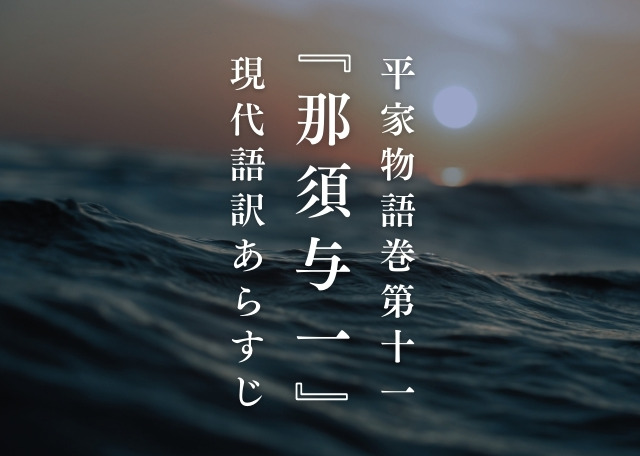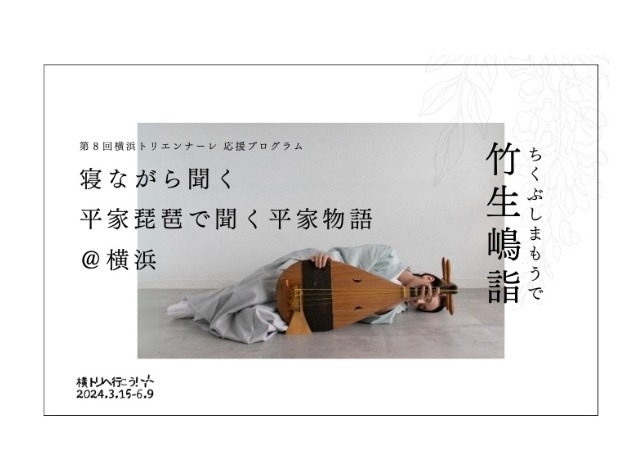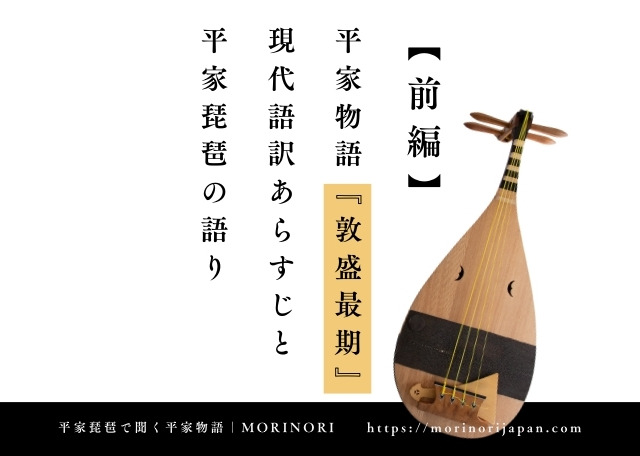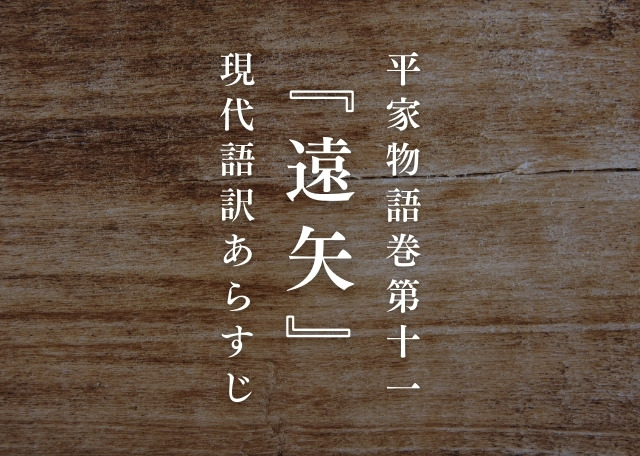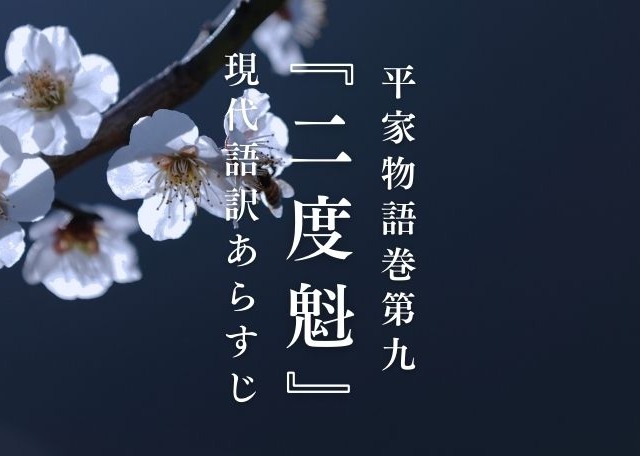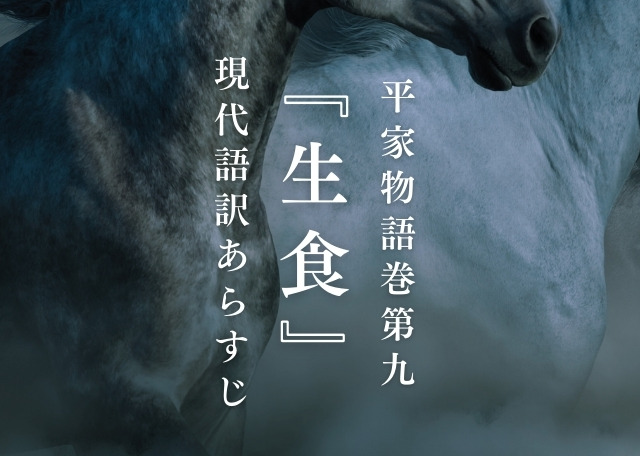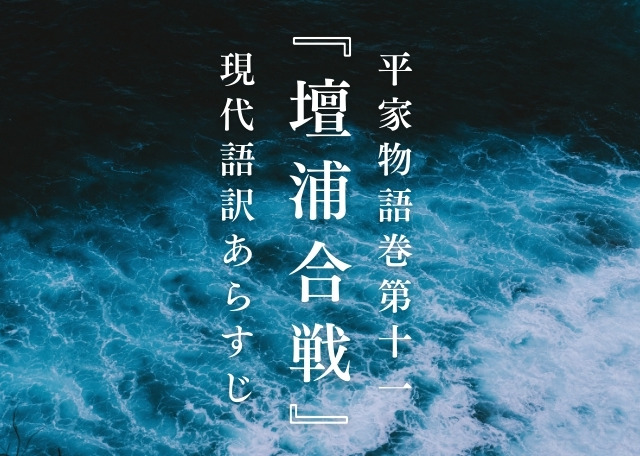Welcome to our site.
This is the website of MORINORI, which holds small Heikyoku (a performance of the Heike Monogatari accompanied by Heike biwa) concerts and lectures. On this page, we introduce a modern translation of the summary of the Heike Monogatari, Volume 11, “Yuminagashi”. It’s not very good, but please take a look if you like.
▼For first-time visitors
https://morinorijapan.com/en/welcome
▼Program introduction
https://morinorijapan.com/en/performance-lineup
▼Listen to Heikyoku
https://morinorijapan.com/en/watch-the-sound/
▼Click here for a list of modern translations of the Tale of the Heike
The Tale of the Heike is performed at concerts and lectures, etc., in modern Japanese translation.
https://morinorijapan.com/en/category/tale-of-the-heike-en/
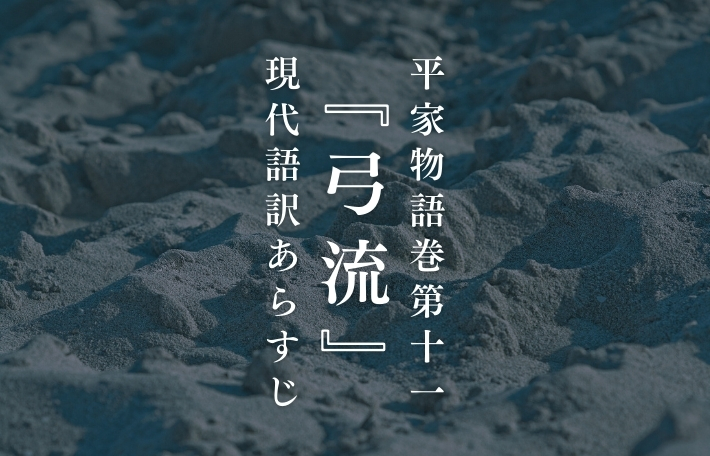
Tale of the Heike, Volume 11, “Yuminagashi” – A brief summary
A man of about 50 years of age, wearing black-threaded armor and carrying a long sword with a white handle as a walking stick, began to dance on the spot where a fan had been placed. Ise no saburou Yoshimori, seeing this, ordered Yoichi to shoot the man. Yoichi hit the man with a perfect arrow, and the man fell headlong into the bottom of the boat. In response, the Heike side fell silent, and the Genji soldiers beat their quivers and cheered.
The Heike were unhappy about this, and they brought three warriors up onto the beach to provoke the Genji. The battle began, and Juro of the Miya Valley was attacked, but he managed to retreat, and the Heike warrior Akushichibei Kagekiyo announced himself. This restored the morale of the Heike, and over 200 men went up onto the beach to provoke the Genji again, but over 80 horsemen led by Yoshitsune charged at them, and the Heike retreated to their boats.
The Genji took advantage of their momentum and advanced until the horses’ bellies were almost submerged in the water, but from the boats, the Heike attacked Yoshitsune with rakes. Yoshitsune dropped his bow, but he shook off the restraining hands of his allies and retrieved it, returning with a smile. The adults criticized him, but Yoshitsune explained that he had retrieved it because he was frustrated that the enemy was making fun of his weak bow, and everyone was deeply moved.
After that, the Genji were exhausted and set up camp to sleep, but Yoshitsune and Ise Saburo did not sleep, but instead kept watch for the enemy’s movements. Meanwhile, the Heike were planning a night attack, but an internal dispute over who would lead the charge meant that the night passed without incident. If the night attack had taken place, the Minamoto clan would have been in a difficult situation, but the Heike clan’s failure to attack was their downfall.

The Tale of the Heike, Volume 11, “Yuminagashi” – Full modern translation
*This is a modern translation of the text taken from the Heikyoku score “Yuminagashi”.
Unable to bear the sight, a man of about fifty years of age, wearing black-threaded armor and carrying a long sword with a white handle as a walking stick, stood up in the place where the fan was placed and began to dance. Seeing this, Ise no saburou Yoshimori stepped up behind Yoichi and told him, “This is an order. You must also kill this one.” Yoritomo picked up his middle-sized bow and arrow, aimed at the man in the middle of the dance, and fired. The arrow hit its target perfectly, and the man was shot down headfirst into the bottom of the boat. Some people praised him for his skill, while others lamented his heartlessness. The Heike were silent, and the Genji clapped their quivers and cheered.
The Heike, perhaps feeling aggrieved by this, pushed a shield out from their boat and three warriors – one holding a bow, one holding a long sword, and one holding a spear – came up onto the shore and challenged the Genji, saying “Come here”. Seeing this, Hougan(Yoshitsune) ordered, “How cheeky. “Send your strong young retainers to ride over and disperse them.” In response to this, Mionoyanojyuro, a resident of Musashi Province, Goro, also a resident of Musashi Province, Fujishichi, also a resident of Musashi Province, Niunoshirou, a resident of Kanto Province, and Kiso chuji, a resident of Shinano Province, rode over in five groups.
First, a large arrow, which had been made in Kuroboro, was shot from behind a shield into the left side of Mionoyanojyuro’s horse, so that the stirrups were hidden. The horse fell over like a folding screen, and Mionoyanojyuro quickly dismounted and drew his sword, jumping over the horse’s right leg. At that moment, a warrior from the Taira clan attacked from behind the shield, wielding a large sword with a white handle. Juro judged that his small sword would be no match for the large sword, so he rolled to the ground and fled, but the warrior immediately gave chase.
Just when it looked like he would be cut down by the long sword, the Heike warrior tucked the long sword under his arm and stretched out his right hand to grab the visor of Juro’s helmet. Juro tried to avoid it and ran away, but he missed his target three times and was finally grabbed on the fourth attempt. He held out for a while, but in the end he was defeated and his helmet was cut off. The other four horsemen did not rush to help him, perhaps sparing their horses, and just watched on.
Juro of the Miyanotani fled behind the horses of his allies and took a breather. The enemy did not pursue any further, and, using his white-handled long sword as a cane and his helmet raised high, he loudly proclaimed, “This is the Akushichibyouekagekiyo of Kazusa, whom the Kyoto children call by that name,” and then retreated. The Heike regained their composure a little, and more than 200 of them came up onto the beach, lining up their shields like the feathers of a female bird, and calling out “Minamoto, come here!”
Hougan(Yoshitsune) said, “Then, let’s scatter them,” and with Ise Saburo in front, Tashiro no Kanjuro in the back, and Goto no Hyoue and his son and the Kaneko brothers on either side, he set off with over eighty horsemen. The Heike had few soldiers on horseback, and most of them were foot soldiers, so they retreated for fear of being hit by the horses, and all of them got into their boats.
The shields were scattered, and the soldiers were scattered like they had lost their bearings. The Genji took advantage of their victory and advanced until the horses’ bellies were immersed in the water, and they attacked. From the ships, the Heike soldiers brandished their rakes and struck the Hougan(Yoshitsune)’s helmet several times, but the Genji soldiers fought back, using their swords and halberds to drive them off. For some reason, Hougan(Yoshitsune) dropped his bow and tried to retrieve it by scraping it back up with his whip while lying face down. His allies called out to him, “Please give it up,” but Hougan(Yoshitsune) finally picked up his bow and returned, laughing.
The adults all played with the bow and said, “Even if this bow is worth a thousand or ten thousand, why should we give it up for our lives?” In response, Hougan(Yoshitsune) said, “I didn’t take it because I was attached to the bow. If Yoshitsune’s bow had been as strong as his uncle Tamechika’s bow, which required two or three people to pull, he would have let the enemy take it. However, he was so frustrated that the enemy would take this weak bow and sneer, “This is Minamoto no Yoshitsune’s bow,” that he would give up his life to get it back. Those who heard this were deeply moved.
After fighting all day, the Heike boats floated out to sea at night, and the Genji set up camp in the fields and mountains of Mure Takamatsu. The Genji soldiers had hardly slept for the past three days. The day before yesterday, they left Watanabe Fukushima and, rocked by huge waves all night, they were unable to sleep at all. Yesterday, they arrived at Katsuura in Awa Province and fought, then crossed the mountains all night, and today they fought all day, so both men and horses were exhausted. The soldiers fell asleep, not knowing whether they were in front or behind, using their helmets, armor sleeves, and quivers as pillows.
However, even among them, Hougan(Yoshitsune) and Ise Saburo did not sleep, Hougan(Yoshitsune) went up to a high place to keep watch to see if the enemy was approaching, and Ise Saburo hid himself in a hollow and waited, intending to shoot the horse in the belly if the enemy came close. The Heike were planning to launch a surprise attack that night with Notodono as their general, but the night had broken out while Echuchu Jiroubyoue Moritsugu and Emi Jirou were fighting over who would lead the charge. If they had launched the surprise attack, the Minamoto would have been no match for them, but their failure to do so was their downfall.
▼Click here for a list of modern translations of the Tale of the Heike
*The Tale of the Heike is performed at concerts and lectures, etc., in modern Japanese translation.
https://morinorijapan.com/category/tale-of-the-heike/
Thank you for reading this far.
I hope to see you somewhere someday.

